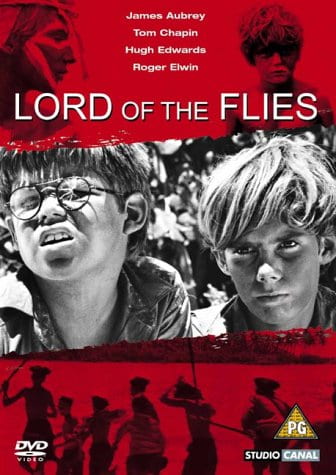
DVD cover for Lord of the Flies
Jesse Pasternack delves into what makes Peter Brook’s interpretation of Lord of the Flies such a terrific example of the filmmaker’s talent.
While Peter Brook is best known for his groundbreaking contributions to theater such as his iconic productions of the many plays that he directed and his highly influential book The Empty Stage (1968), he also had a lifelong fascination with cinema. He once noted that “when I was 18 or 19, my one ambition was to make a film,” and he went on to direct several. One of those films which demonstrated his underrated yet deep talent as a movie director was Lord of the Flies (1963), which continues to be just as fascinating today as it was when it came out 61 years ago.
Lord of the Flies is an adaptation of William Golding’s novel of the same name, which helped pave the way for him to win the Nobel Prize in Literature in 1983. It takes place after a nuclear war which has led several groups of boys to crash land on an island. Ralph (James Aubrey) becomes leader of the boys but faces a rival in Jack (Tom Chapin), who is more focused on hunting wild pigs and bullying Ralph’s friend Piggy (Hugh Edwards) than in trying to find ways to get rescued. Rumors of a mysterious beast bring things to a boiling point and lead to tragic violence.

Hugh Edwards as Piggy in Lord of the Flies
Brook begins the film with a wonderful montage. It starts with photographs of scenes from fancy British boarding schools as marches play, which establishes the world that the film’s characters initially inhabit. But then Brook (who is also credited as one of this film’s editors) intercuts images of nuclear missiles and warfare as the music gets more sinister. This sequence effectively establishes the context for what follows, the main thematic journey from order to chaos, and that Brook was as knowledgeable about filmmaking as he was about theater directing.
Despite this cinematic overture, the rest of the film adopts a style which emphasizes realism over artifice. Its black-and-white cinematography, exceptional use of extreme close-ups, and immersive camera movements (my favorite of which is a zoom-out when Piggy is telling a story to make it seem like you are with the group of kids who are listening to him) feel like a type of cousin to documentaries like Primary (1960) or Don’t Look Back (1967). All these techniques make the film’s central dramatic event — a group of presumably innocent boys descending into barbaric violence — seem very naturalistic.

Scene from Primary (1960)
Another thing which helps give this film a type of elemental power is its cast. All of the boys in the cast were “first-timers” (to use a term from independent filmmaker Sean Baker) who had never acted before. Their lack of experience shows, especially in their first scenes, and that aids the sense of confusion the boys feel because they have been stranded on the island. There’s nothing “cute” or “over the top” about their performances. They all feel like “real children with real faces,” as Brook described them in an interview with the Criterion Channel. When Piggy dismisses the boys around him as “a crowd of kids,” it feels accurate in a way that it would not have been if the young people he was referring to were played by professional actors.
Though Brook’s legacy will undoubtedly center on his numerous theatrical accomplishments, it also contains his work in film. While I haven’t seen his other cinematic works, I remain astonished by Lord of the Flies. It translates the novel’s powerful story of a descent into cruelty into cinematic terms in a way that is unforgettable. It might even make you wish that Brook had gone on to make other films. But then again, we’ll always have this one.
Lord of the Flies will be screened at IU Cinema on March 26 as part of the series Michael A. McRobbie’s Choice.